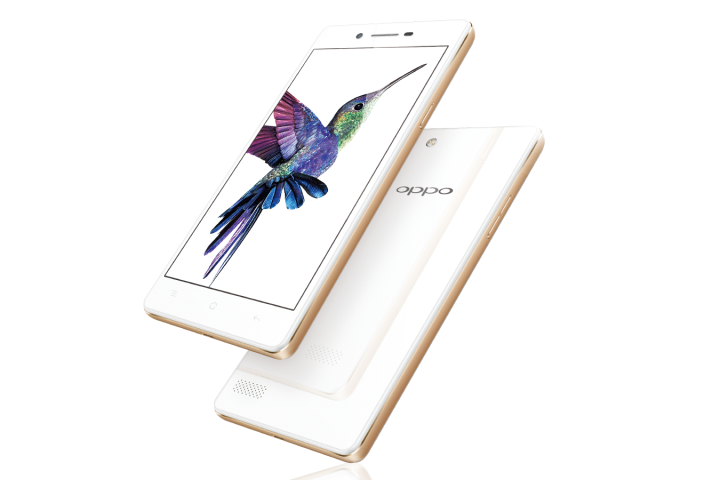
What sets this one apart from other entry-level phones is the design. It’s not going to wow you with heavy-duty aluminum, but the Neo 7 has an exterior designed from individual cut-glass sections, which makes it reflective in a unique way.
Oppo says it used a special concentric circular arc cutting on the frame, which is a fancy way of saying it’s rounded. The phone is only 7.5mm thick, and you have your choice of either Ivory White with a gold frame or Midnight Blue with a silver frame.
As for the specs, the Neo 7 features a 5-inch display with a very low qHD resolution of only 960 x 540 pixels. It’s powered by a quad-core Qualcomm Snapdragon 410 processor and 1GB of RAM, along with a mere 16GB of internal storage. If 16GB isn’t enough, you can add more with a MicroSD card.
The rear camera comes in at 8-megapixels with LED flash and support for HDR, while the front-facing shooter gets 5-megapixels. The front camera lens lacks LED flash, but the display can be used for the same purpose. The overall camera experience also gets enhanced with Oppo’s Beautify 3.0 camera filters. Another cool feature is UltraHD, which shoots six photos consecutively and combines the best parts of each photo to make a 24-megapixel ultra high definition image.
The Neo 7 runs Oppo’s own Color OS 2.1, which is based on Android 5.1 Lollipop. Rounding out the specs is Bluetooth 4.0, Wi-Fi 802.11 b/g/n, LTE connectivity, dual-SIM support, and a 2,420mAh battery (unremovable).
Unfortunately, Oppo didn’t reveal any pricing just yet, but it should come in below $200. Oppo will offer the Neo 7 in the United States, India, and other international markets. The initial launch will be on October 28 in India.
